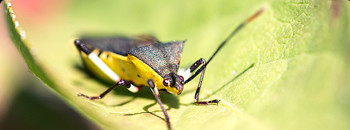Unlike mosquitoes, who are large enough and loud enough to be noticed, ticks are significantly less obvious but often just as dangerous. People who are familiar with tick problems are used to checking for the pests after hiking or camping, but a recent Wall Street Journal article revealed that the majority of tick bites happen closer to home – literally in your own back yard.
In an August 2 Wall Street Journal article, ticks were profiled as the source of infections such as Lyme disease and Rocky Mountain spotted fever and were cited as the second leading carriers of disease, following only mosquitoes. Tick-borne illnesses often exhibit symptoms that look like something else, making them hard to diagnose. In the article, Dr. David Davenport, an infectious disease specialist at Michigan State’s Center for Medical Studies said, “Without rapid or reliable tests for some diseases, it can be hard for doctors to suspect and diagnose.” According to the Centers for Disease Control (CDC), reported cases of Lyme have risen sharply in recent years with more than 35,000 cases in 2008 compared to just 13,000 in 2000. In 2008, there were more than 2,500 reported cases of Rocky Mountain spotted fever, which can become fatal if not treated, compared to only 579 cases in 1999.
What can be done? Dr. Kirby Stafford from the Connecticut Agricultural Experiment Station says the answer is as simple as landscaping. Coining the phrase, “integrated tick management,” Dr. Stafford has found certain lawn care techniques to be effective when battling the roughly 82 percent of ticks that reside within three yards of a lawn’s perimeter.
Follow these landscaping tips to make sure you’re not inviting ticks into your life:
- Make a barrier of cedar wood chips—a natural tick repellent—between wooded areas or stone walls and lawns heavily used by the family
- Keep pets out of the woods
- Avoid vegetation that attracts deer
- Treat yards in affected areas with proper pesticide products
- Follow the CDC’s “integrated tick management” recommendations, which include preventative landscaping and proper application of insecticides to lawns in affected areas

